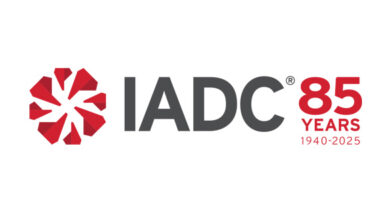A New ‘Golden Age’ for R&D
By Mike Killalea, editor & publisher
Back in the day, as a wet-between-the-ears engineer clutching a freshly minted diploma, I joined the illustrious deep-think research arm of a major oil company, my entrée into the oil patch. Fascinating work, but, compared to my brilliant fellows, I was something of a dim bulb. I concluded I did not need to be reminded of my inadequacies on the job. Being a married man, I had a wife for that.
Those days in the early 1980s was, broadly speaking, the beginning of the end for operator-funded research, and the end of the beginning for service companies to shoulder the work. After the Great Crash of 1986, oil companies largely pulled the plug on research as “non core.” Exceptions remain, the definitive one Shell’s development of expandable tubulars. (Now marketed by Enventure, this landmark enabling technology was publicly unveiled at the 1998 IADC Annual Meeting in New Orleans.)
Thence came Joint Industry Projects, where pooled money funds research of mutual value. In 1982, the Drilling Engineering Association was founded to advance JIPs for drilling R&D. Through DEA, more than 160 JIPs have been organized, some as public-private partnerships, some wholly funded by industry (p 130).
At the 2008 IADC/SPE Drilling Conference held in March in Orlando, the audience was polled on likely sources of innovation. 22% said operators, but the plurality was JIPs (39%), slightly edging out service providers (37%). (Only 1% voted for government or university labs, giving government an undeserved bum rap. Actually, government funding has resulted in key breakthroughs. In the USA, for instance, one landmark new downhole technology, GrantPrideco’s Intellipipe, came about through projects spanning more than a decade, and enjoying $7.8 million from Uncle Sam’s coffers. Total funding, including industry matching, exceeded $17 million.)
Service companies have increasingly embraced R&D as inimical to their core business. Any R&D commitment is necessarily long term. One example: Halliburton recently introduced MonoProp, described as a high-performance polymer alloy with a very low specific gravity (1.08) and properties far different than the crosslinked systems currently used. (See the Products, p 139.) Instead of a crosslinked polymer, this proppant produces a partial monolayer in fractures, which allows porosity and fluid flow, the company says. Company researchers estimated that it took up to 6 years to develop the system. While Halliburton couldn’t tie a single price tag to this specific effort, the company has reported investing during 2007 more than $300 million for R&D. Other companies can trot out similar stats.
In fact, Baker Hughes just cut the ribbon on its new Center for Technology Innovation (p 138). The 14-acre, $42-million Houston facility is described as a “state-of-the-art” research and engineering facility for oil and gas completion and production technologies.” Its centerpiece is a 209,000-sq ft lab where work will advance completion and production technologies for deepwater, extreme HPHT, production optimization, and big-bore completions.
We may be entering a new golden age for industry R&D. I encourage you to get involved in organizations like DEA, who are charting the way forward. Come to our workshop in June in Galveston. (See the link at www.dea-global.org.)
New technology is only half the battle. We still must ensure that our workforce, green and seasoned alike, can actually use these nifty toys the labs will crank out. But that’s a story for another day. Stay tuned.
You can reach Mike Killalea at mike.killalea@iadc.org




